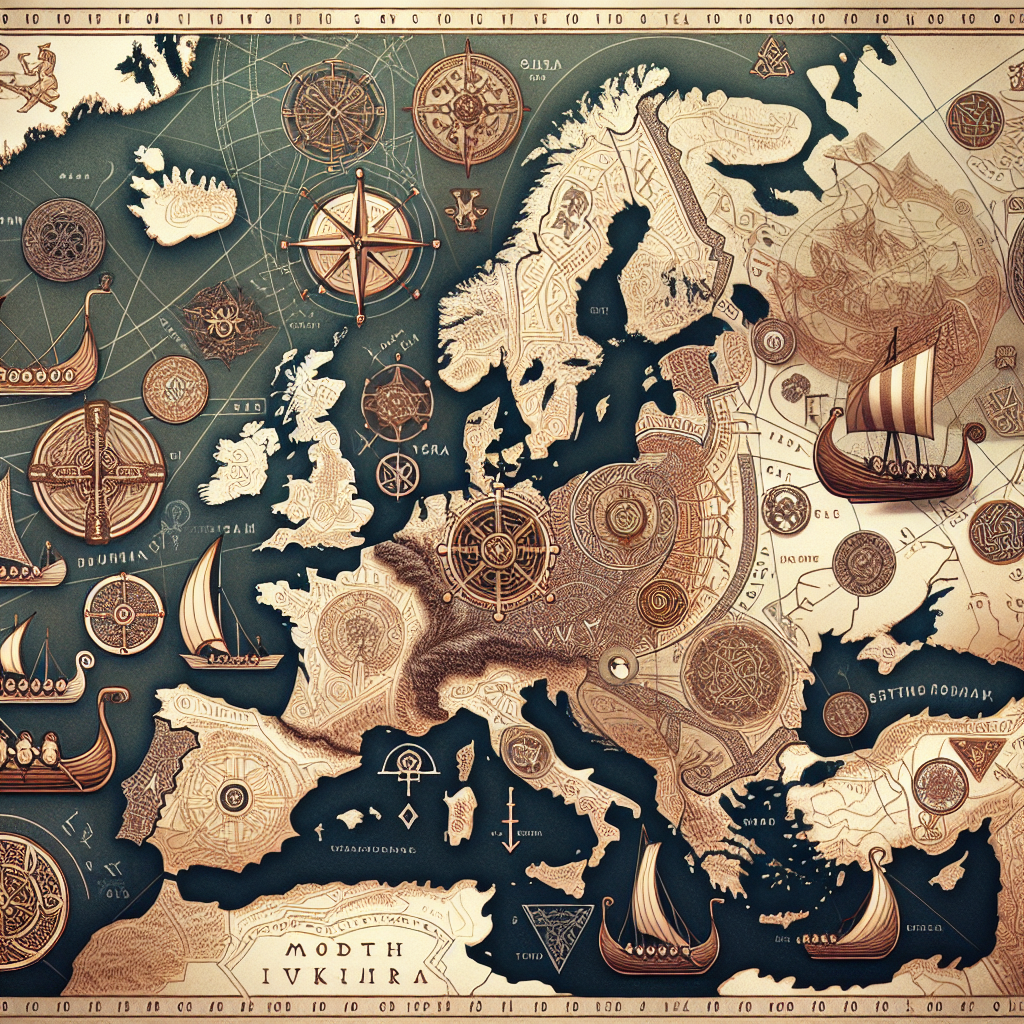Viking Influence on European History: Leave No Trace Unexplored
When we think about the Vikings, images of fierce warriors with horned helmets and longships slicing through icy waters often come to mind. However, the notorious Norsemen left much more than battle scars on European soil. Their influence permeates various aspects of European culture, from linguistics to urban planning. So, let’s dive into the annals of history and explore the indelible marks left by the Vikings.
The Seafaring Pioneers
The Vikings were master navigators, a prowess attributed to their advanced seafaring technology. They were the first Europeans to set foot in North America, centuries before Columbus even thought about asking for directions. Their maritime expeditions opened up new trade routes and established connections far beyond Scandinavia.
- Expansion into the British Isles
- Establishment of trading posts in modern-day Russia
- Exploration and brief settlement in North America
Linguistic Legacies
Have you ever wondered why many English words sound like Norse epics? That’s because the Vikings left a lasting impact on the English language. Words like “sky,” “window,” “knife,” and even “husband” owe their origins to Old Norse. The Vikings didn’t just invade lands; they invaded languages too!
The Old Norse influence isn’t limited to English. Scandinavian languages, as well as some regions of France and Germany, still carry the imprints of Viking linguistics.
A Cultural Confluence
Forget about sword fights for a moment; the Vikings were also cultural connoisseurs. Their interactions with other cultures led to an exciting blend of traditions, crafts, and art. For example, the Vikings played a significant role in the economic and cultural life of early medieval Ireland and Scotland, contributing to the growth of cities like Dublin.
Here are some cultural artifacts influenced by the Vikings:
- Runestones and intricate jewelry
- Saga literature depicting heroic tales
- Advanced shipbuilding techniques
Architectural Impressions
When Vikings settled in England, Ireland, and other parts of Europe, they contributed to the architectural landscape. Structures such as timber longhouses and stave churches reflect Norse engineering ingenuity. These buildings have stood the test of time and continue to captivate historians and tourists alike.
Legal and Political Systems
Move over, Magna Carta! The Vikings were ahead of the game when it came to creating governing systems. The Althing in Iceland, established around AD 930, is one of the oldest parliamentary institutions in the world. Their assembly practices influenced the development of parliamentary procedures in medieval Europe.
A Legacy That Stands the Test of Time
The influence of the Vikings is unmissable, weaving through the fabric of European history like threads in an elaborate tapestry. From bolstering trade networks to shaping languages and architectural styles, the Vikings were far more than marauding pirates. They were pioneers, artists, and statesmen whose influence can still be felt in modern society.
So next time you hear the term “Viking,” remember that these Norse adventurers left behind more than just tales of conquest—they left a multifaceted legacy that continues to inspire and intrigue.
Curious for more mind-blowing historical insights? Stay tuned to our blog, where leaving no trace unexplored is our mission!
